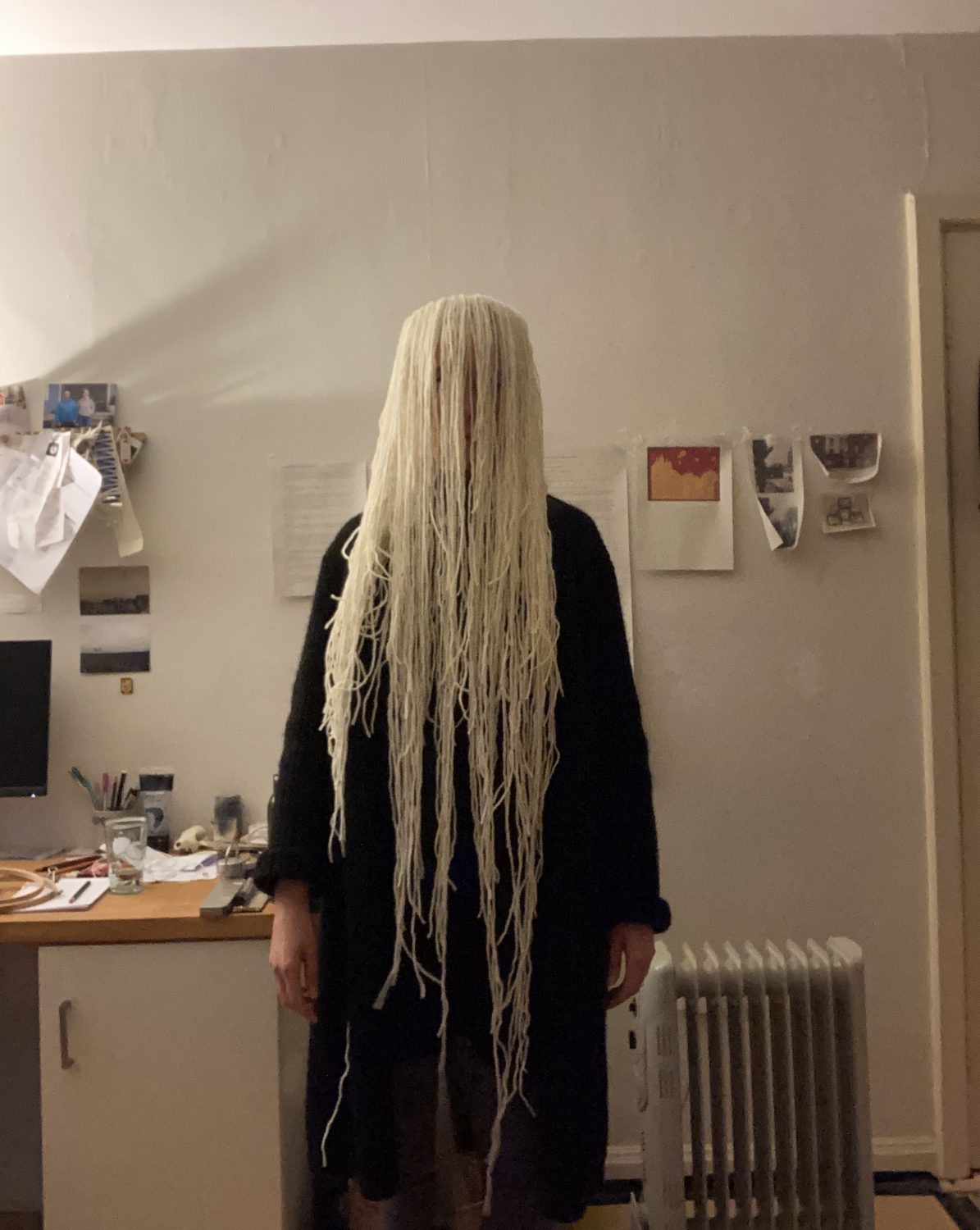Unsurprisingly, Covid slowed down projects I was working on, and knocked some out completely. It also knocked my confidence as an artist – primarily because of the lack of regular creative work, a dearth of substantive contact with other artists, and having to adapt to new ways of working that weren’t always conducive to my creativity.
So it was a real pleasure recently to be able to finally air some ideas for a set design project that had straddled a lot of that Covid time, with a work in progress showing nearly two years after we first started talking about it. The Holding Bones project hit a load of bumps in the road, but the show was changing shape and bursting to come to life. And it helped keep me connected with some kind of creative life too.

I’ve known Niamh Lawlor of Puca Puppets for many years though we have never worked together. So I was pleased when in late 2020 she asked me to help design a production that was a bit of a departure for her. Even more so when I heard she’s also asked director Veronica Coburn and sound designer/composer Sinéad Diskin to work on it. Two women with strong theatre practices, who I respect hugely and hadn’t yet had an opportunity to work with.
The Holding Bones is a one woman show about death and about our connection with ancestors and family. It’s gentle and sad and funny. It’s written by Niamh about her family, and this was the first time she’d be working in this way, with a director and designers. She is a skilled artist and multitasker who is used to doing it all herself. She also has a long career as a deft puppeteer, and it was clear we should use her talents to help tell the story – even though it was adamantly not a puppet show. Or even a show with puppets.

We started out deep in early 2021 lockdown. Like many others, we were anxiously trying to figure out how to do our creative work via Zoom. Building up a meaningful artistic language between people working together collaboratively for the first time is a complex enough process. It turns out that doing it online dulls a lot of the organic, human connections that I didn’t even realise were going on in previous processes. How to do something meaningful and inventive and joyful and three dimensional while talking to small faces on a screen in my spare room. At the end of 2021 we progressed to meeting in a room, masks carefully on. My first time physically in rehearsals since autumn 2020. I found both these online and offline experiences unsettling and nerve-wracking. Was it obvious to everyone that I was off my stride? That I was struggling to remember how to think as a designer? That I felt a bit creatively shrivelled?
In the room together we had the time to play. I’d almost forgotten how. To not focus too much on the final product yet. To develop a visual and aural language that suited the piece, and that wove all of our aesthetics and ideas in. We played with paper and light and clay and music and drawings and yarn and voice and plastic sheeting and tinfoil and sound. We tried to find ways of populating the stage around Niamh with other beings. Veronica and I both wanted to see Niamh the artist on stage – a glimpse of her overcrowded workspace, her beautiful drawings, the way her hands make objects come to life. I didn’t have enough time. I felt I could have spent at least another week or two or more in this process of bringing the materials to life and finding out which ones would serve best.

By the time we did a work in progress showing of The Holding Bones in the Civic Theatre at the end of 2022, I had designed two full productions since Covid – Sing Your Failures and Hive City Legacy – and was feeling a bit more confident again in my creative abilities (though I still resist having creative conversations via Zoom). Niamh and Veronica had created an almost fully-formed show, and we had come up with a satisfying design that would allow for further exploration and development, should The Holding Bones get a further life. We felt it was in a very good state. It had been a slow road to get to this point and Niamh had put so much energy and work and inventiveness into the piece – I primarily wanted to make sure she was happy with how it had all come out.
In the Civic studio, on a wintery Saturday afternoon, Veronica and I talked the assembled audience through what they were about to see, how we had worked together, and our hopes for the future physical staging of the piece. And we sat back and watched Niamh weave her gentle magic over the people in the room.

I can’t honestly say that I feel fully creatively unstuck yet. At all. The last few years have been frustrating from that point of view. But doing things like playing with the team on The Holding Bones has kept me buoyed up enough to keep swimming into this new year.










 – A
– A